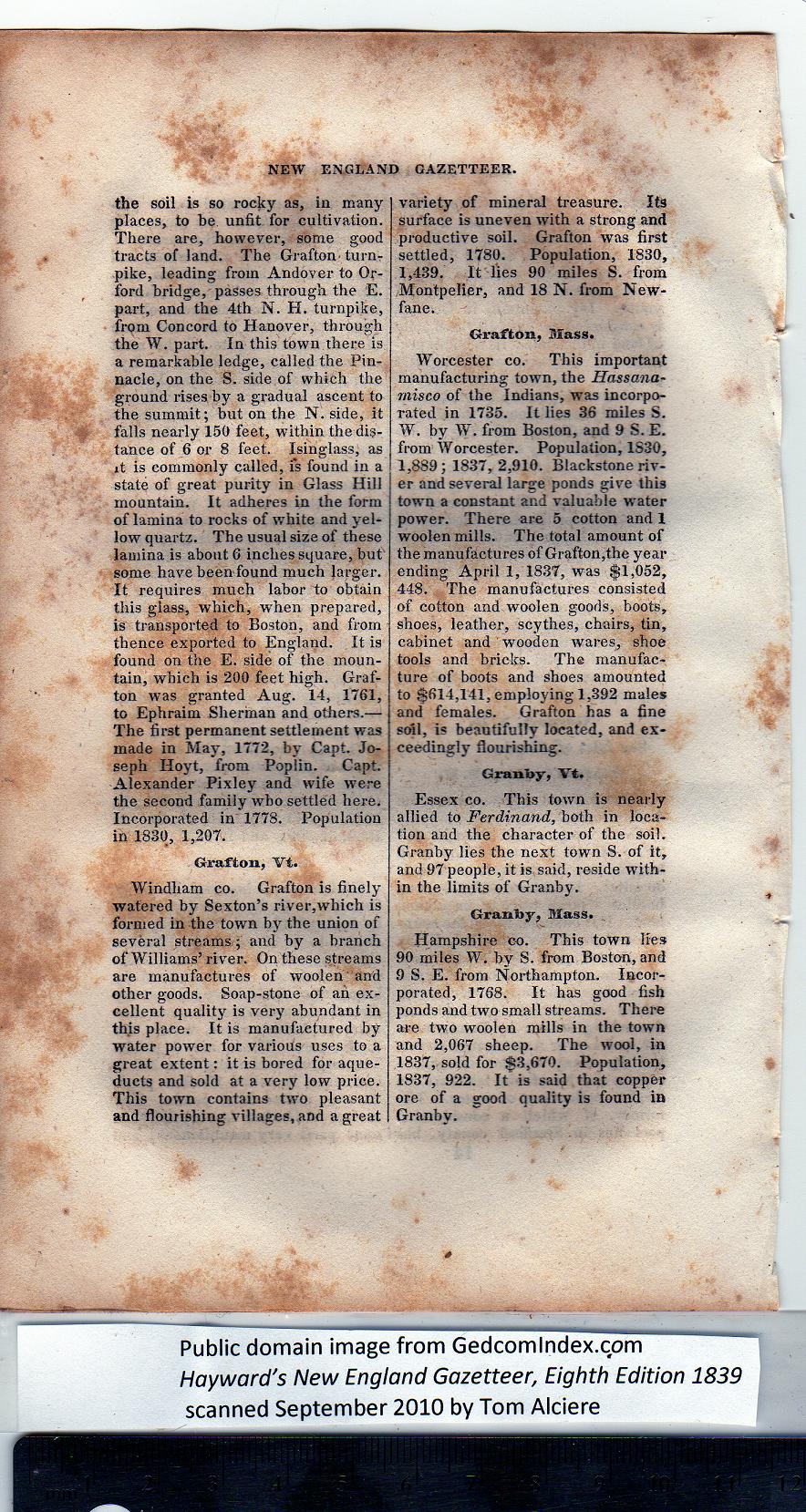|
the soil is so rocky as, in many
places, to be. unfit for cultivation.
There are, however, some good
tracts of land. The Grafton turn-
pike, leading from Andover to Or-
ford bridge, passes through the E.
part, and the 4th N. H. turnpike,
from Concord to Hanover, through
the W. part. In this town there is
a remarkable ledge, called tbe Pin-
nacle, on the S. side of which the
ground rises by a gradual ascent to
the summit; but on the N. side, it
falls nearly 150 feet, within the dis-
tance of 6 or 8 feet. Isinglass, as
it is commonly called, fs found in a
state of great purity in Glass Hill
mountain. It adheres in the form 1
of lamina to rocks of white and yel-
low quartz. The usual size of these
lamina is about 6 inches square, hut
some have been found much larger.
It requires much labor to obtain
this glass, which, when prepared,
is transported to Boston, and from
thence exported to England. It is
found on the E. side of the moun-
tain, which is 200 feet high. Graf-
ton was granted Aug. 14, 1761,
to Ephraim Sherman and others.—
The fir3t permanent settlement was
made in May, 1772, by Capt. Jo-
seph Hoyt, from Poplin. Capt.
Alexander Pixley and wife were
the second family who settled here.
Incorporated in 1778. Population
in 1830, 1,207.
Grafton, Vt.
Windham co. Grafton is finely
watered by Sexton’s river,which is
formed in the town by the union of
several streams; and by a branch
of Williams’ river. On these streams
are manufactures of woolen and
other goods. Soap-stone of ah ex-
cellent quality is verjr abundant in
this place. It is manufactured by
water power for various uses to a
great extent: it is bored for aque-
ducts and sold at a very low price.
This town contains two pleasant
and flourishing villages, and a great
variety of mineral treasure. Its
surface is uneven with a strong and
productive soil. Grafton was first
settled, 1780. Population, 1830, |
1,439. It lies 90 miles S. from
Montpelier, and 18 N. from New-
fane.
Grafton., Blass.
Worcester co. This important
manufacturing town, the Hassana-
rnisco of the Indians, was incorpo-
rated in 1735. It lies 36 miles S.
W. by W. from Boston, and 9 S. E.
from Worcester. Population, 1830,
1,889; 1837, 2,910. Blackstone riv-
er and several large ponds give this
town a constant and valuable water
power. There are 5 cotton and 1
woolen mills. The total amount of
the manufactures of Grafton,the year
ending April 1, 1837, was $1,052,
448. The manufactures consisted
of cotton and woolen goods, boots,
shoes, leather, scythes, chairs, tin,
cabinet and wooden wares, shoe
tools and bricks. The manufac-
ture of boots and shoes amounted
to $614,141, employing 1,392 males
and females. Grafton has a fine
soil, is beautifully located, and ex-
ceedingly flourishing.
Granby, Vt.
Essex co. This town is nearly
allied to Ferdinand, both in loca-
tion and the character of the soil.
Granby lies the next town S. of it,
and 97 people, it is said, reside with-
in the limits of Granby.
Granby, Blass.
Hampshire co. This town lies
90 miles W. by S. from Boston, and
9 S. E. from Northampton. Incor-
porated, 1768. It has good fish
ponds and two small streams. There
are two woolen mills in the town
and 2,067 sheep. The wool, in
1837, sold for $3,679. Population,
1837, 922. It is said that copper
ore of a good quality is found in
Granby. |
